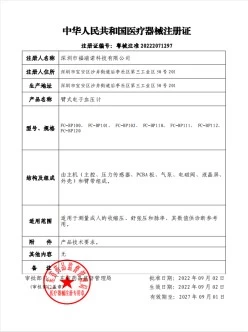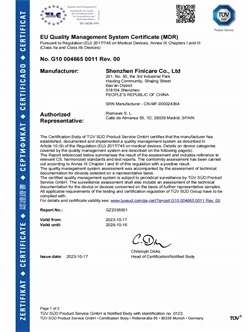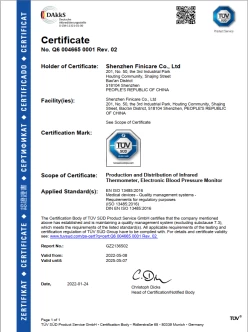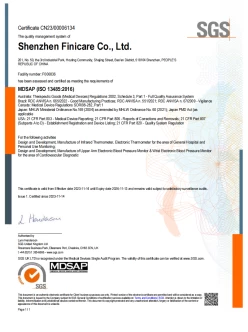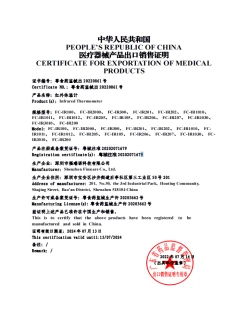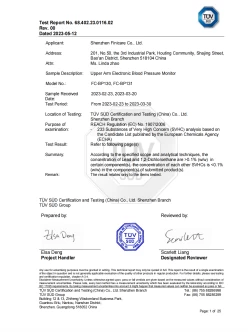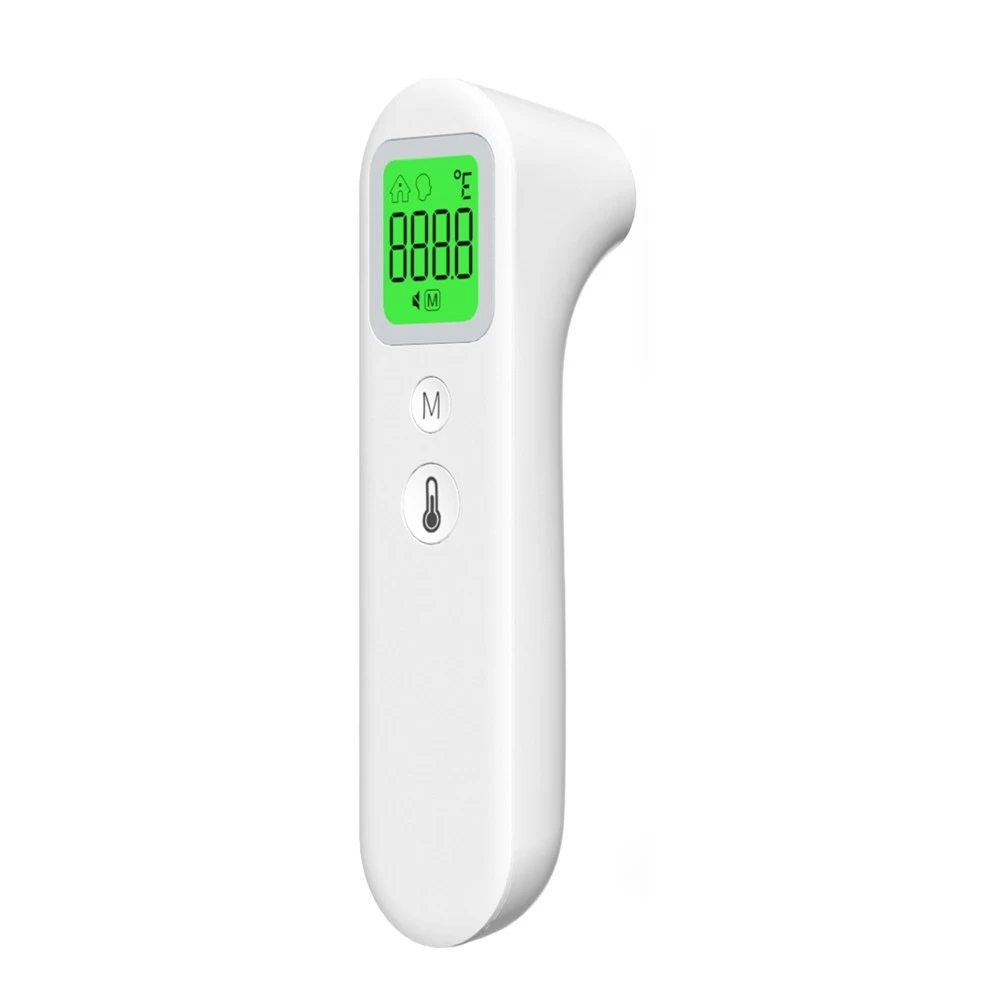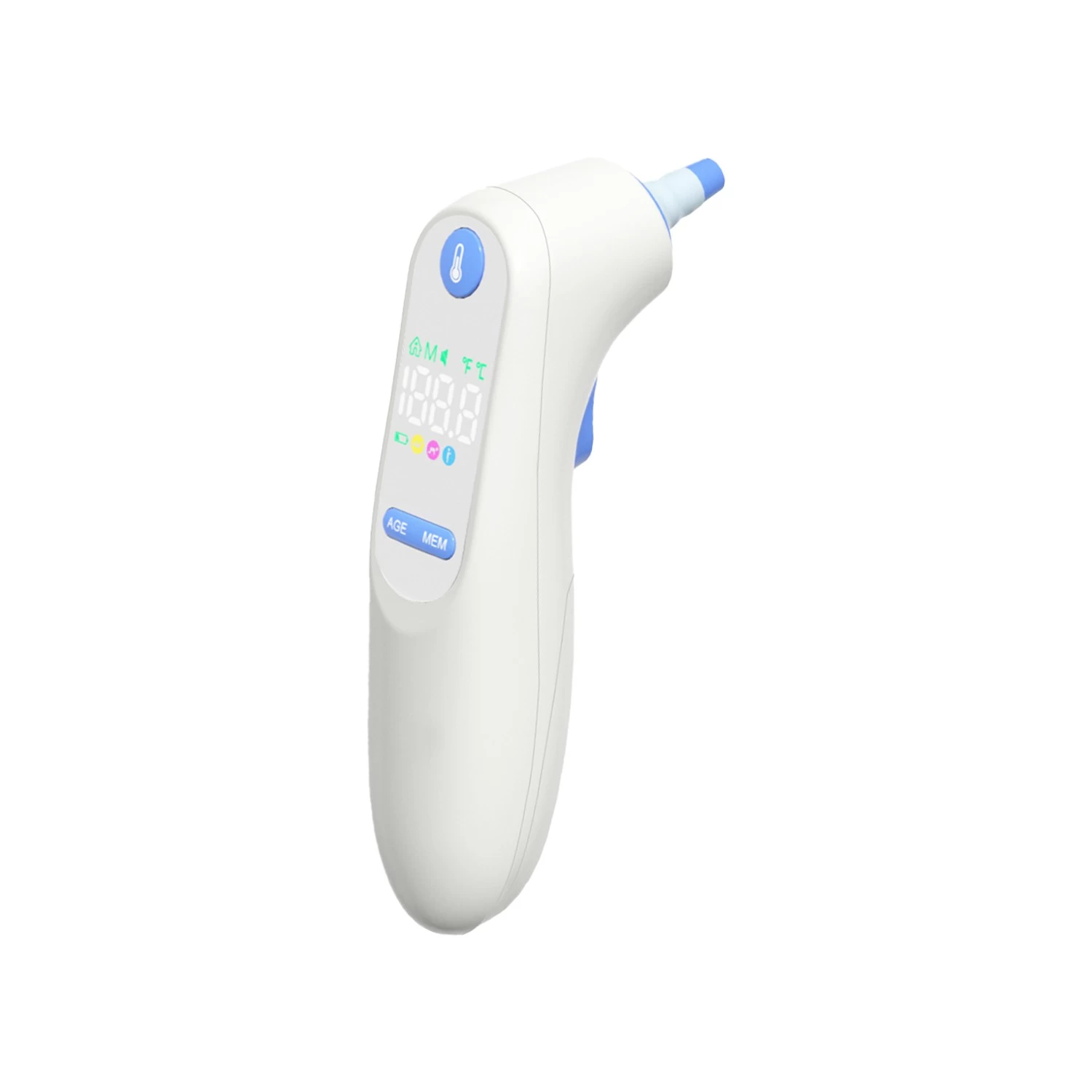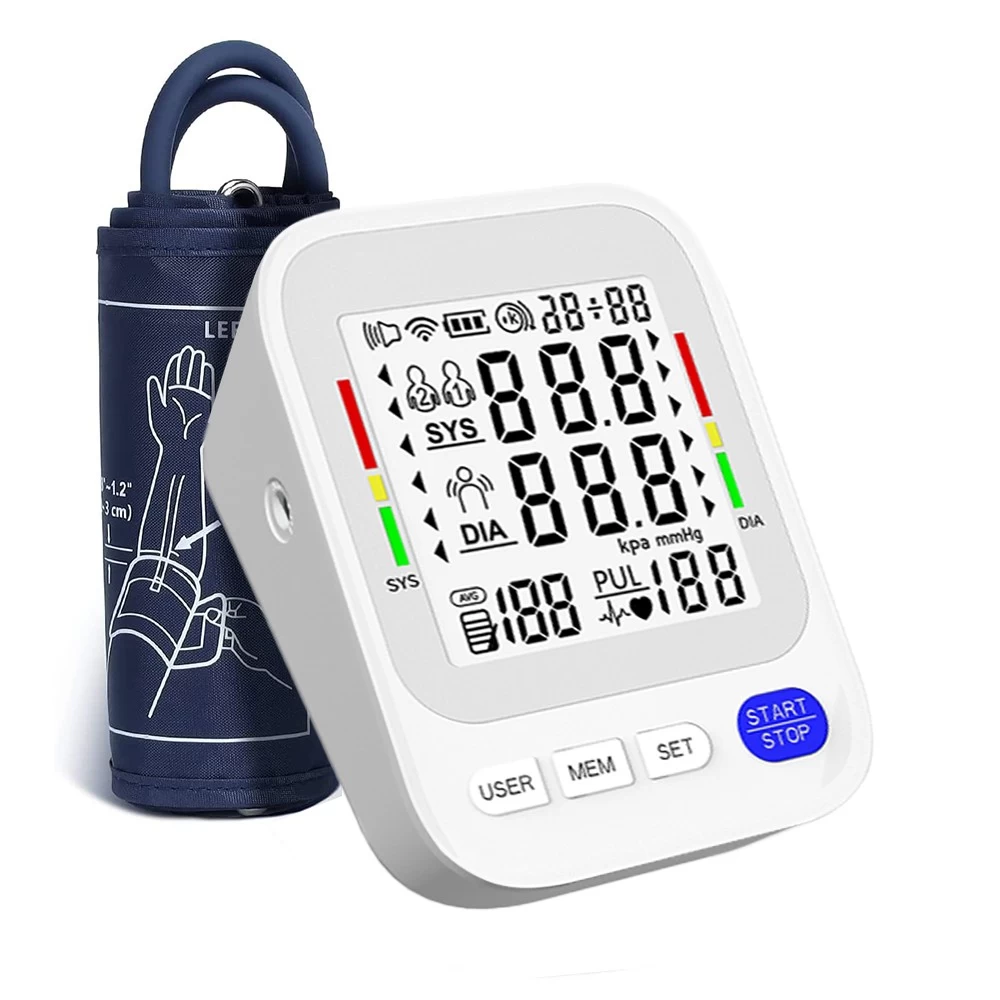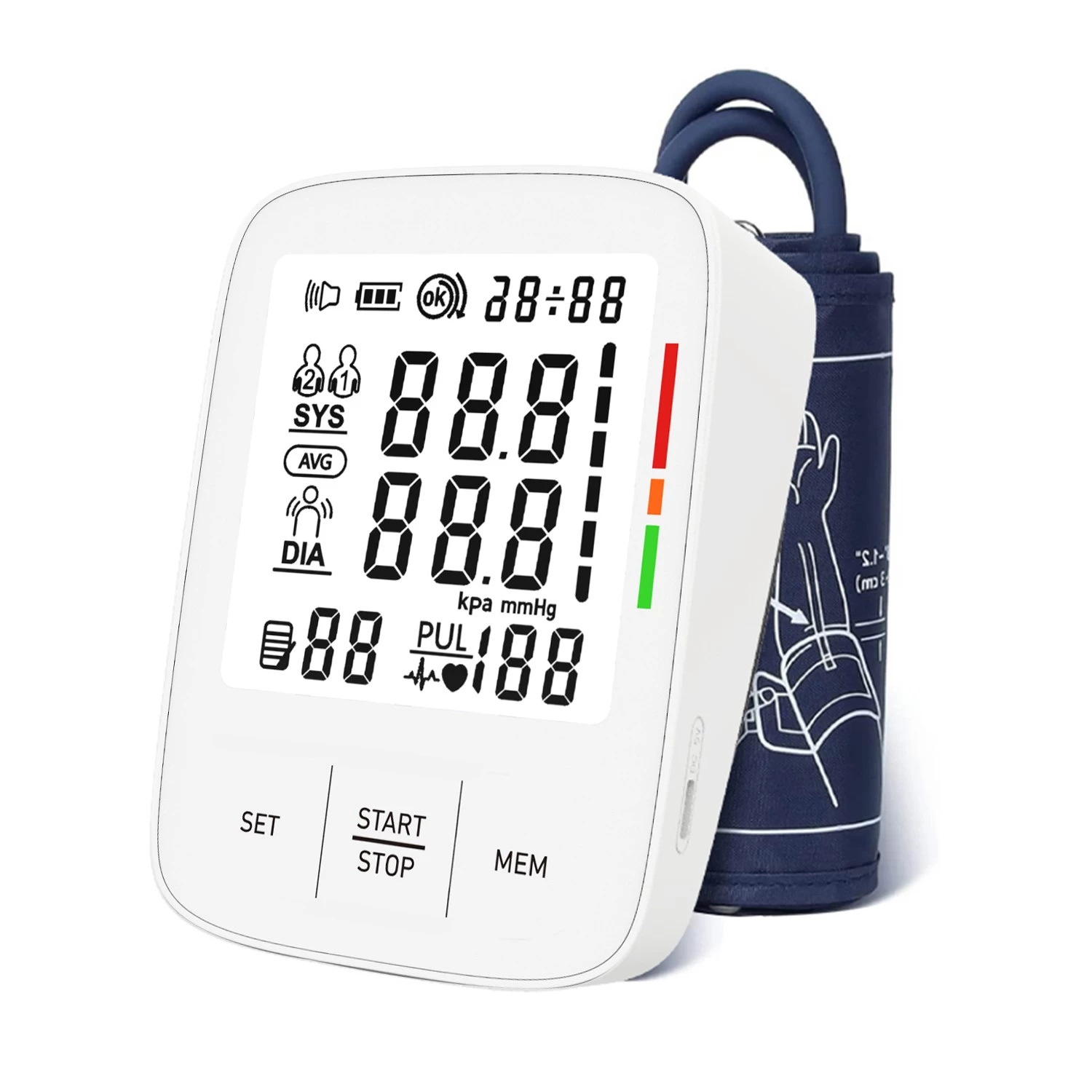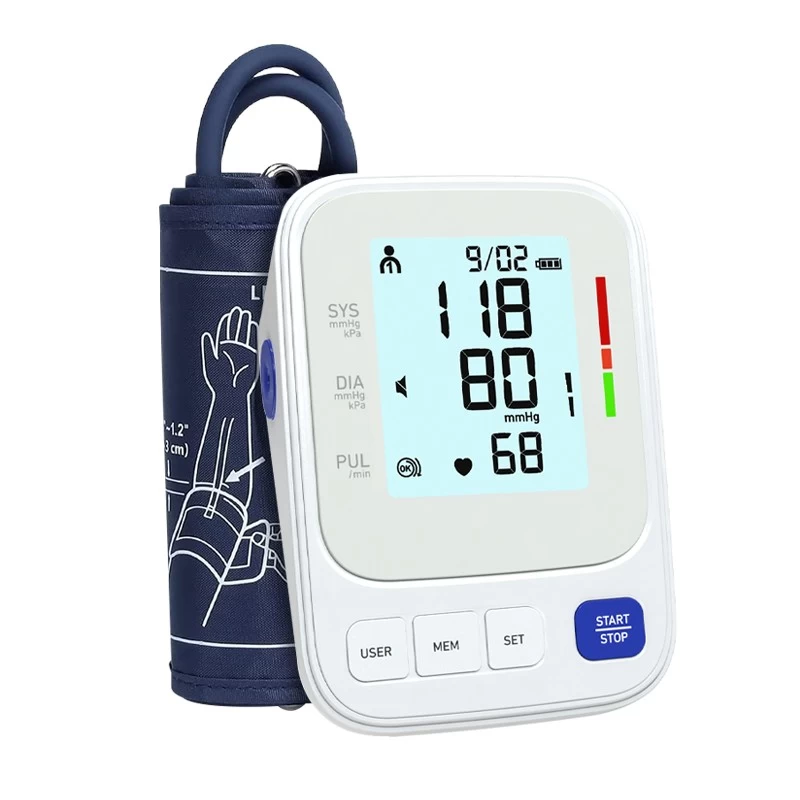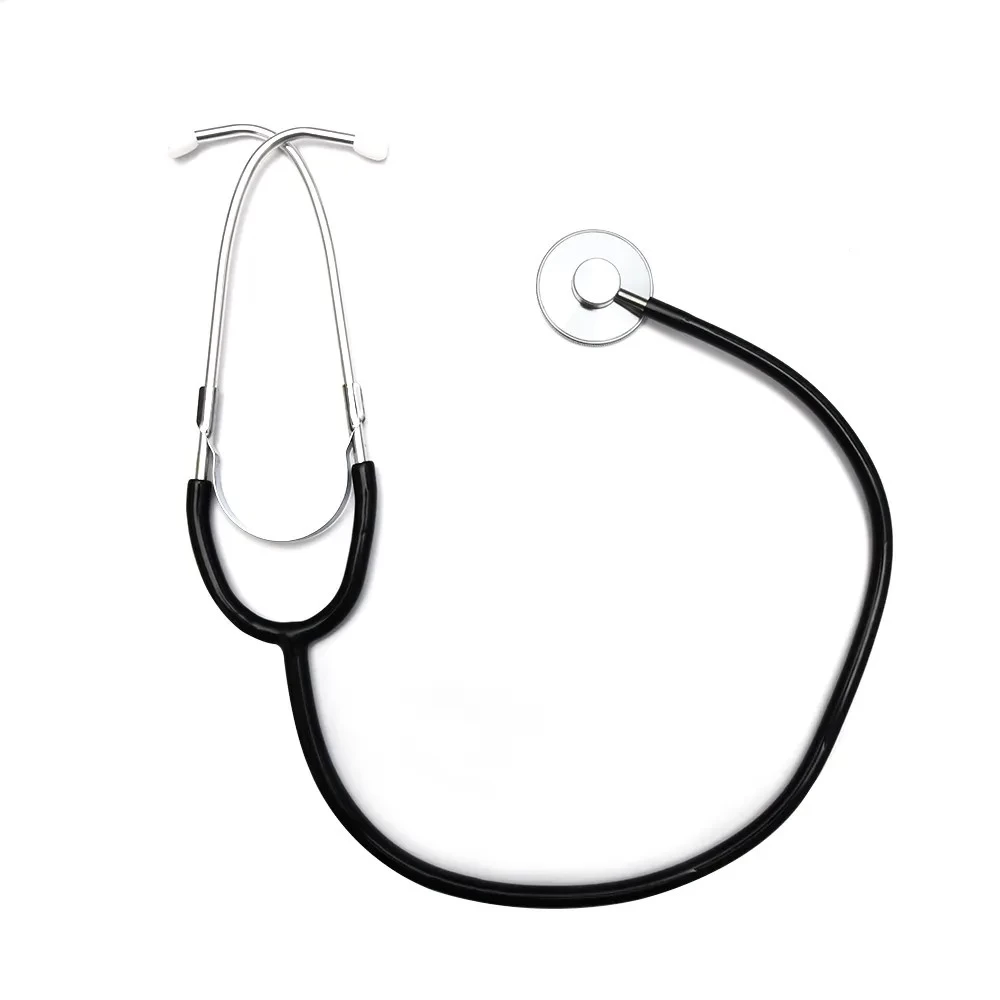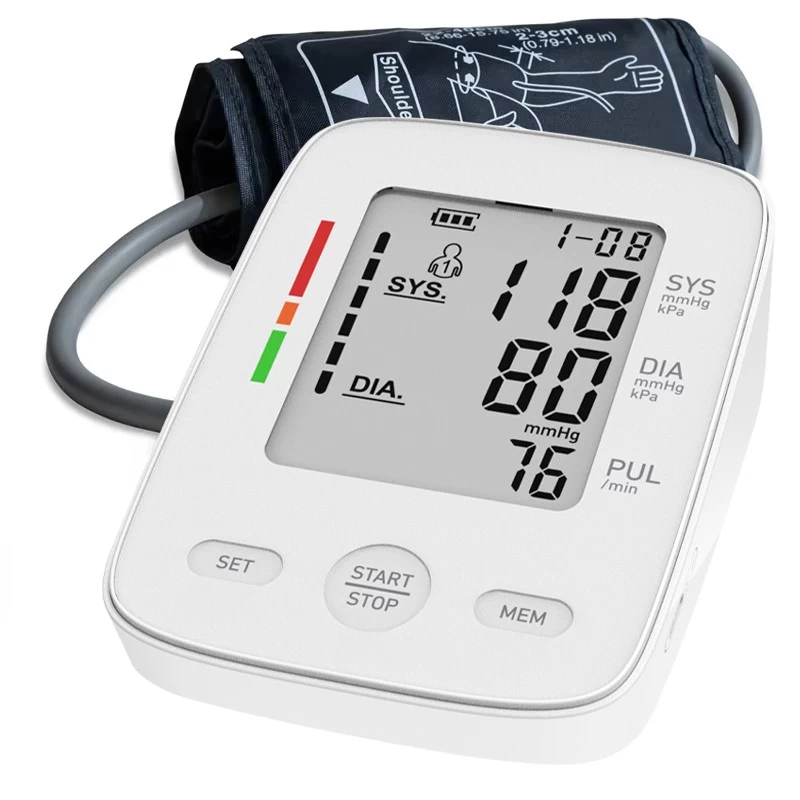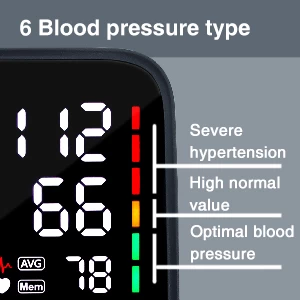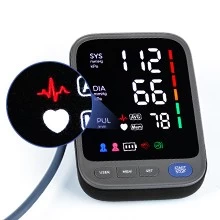How Do I Read Blood Pressure Monitor?
How Do I Read Blood Pressure Monitor?
Monitoring blood pressure (BP) is a critical step in managing cardiovascular health. However, interpreting readings accurately requires understanding how to use the device properly and recognizing factors that influence results. This guide explains how to read a blood pressure monitor, interpret the numbers, and address common concerns.
If your doctor told you that you have high blood pressure, they might have asked you to check it at home through your own blood pressure monitor regularly. It helps you keep track of your blood pressure and heart health. The numbers you get can tell you if you need to change your medicines, lifestyle, or other parts of how you’re being treated.

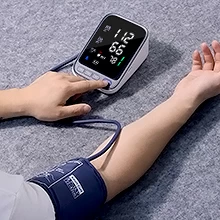
Table of Contents:
- 1.What Are the Factors That Affect BP Measurement?
- 2.Blood Pressure Readings Explained
- 3.How Do I Read Blood Pressure Monitor?
- 4.What Should I Do If My Blood Pressure Reading Is Too High?
- 5.Should I Take Multiple Readings and Average Them?
- 6.How Long Does It Take to Get a Reading?
- 7.Conclusion
1.What Are the Factors That Affect BP Measurement?
Blood pressure readings can vary due to several factors, including:
Body Position: Sitting upright with feet flat and back supported is ideal. Slouching, crossing legs, or lying down may skew results.
Cuff Size: An ill-fitting cuff (too tight or loose) can lead to inaccurate readings. The cuff should cover 80% of your upper arm.
Timing: BP fluctuates naturally throughout the day. Avoid measuring immediately after eating, exercising, or consuming caffeine.
Stress and Emotions: Anxiety, stress, or even talking during measurement can temporarily elevate readings.
Physical Activity: Rest for 5 minutes before measuring. Movement or exertion can raise BP.
Full Bladder: A full bladder may increase blood pressure slightly.
Room Temperature: Cold environments can cause temporary spikes.
Understanding these variables ensures more reliable readings and reduces false alarms.
2.Blood Pressure Readings Explained
Blood pressure is recorded as two numbers:
Systolic Pressure (top number): The force when the heart beats.
Diastolic Pressure (bottom number): The pressure when the heart rests between beats.
Categories:
Normal: Below 120/80 mmHg
Elevated: 120–129/<80 mmHg
Hypertension Stage 1: 130–139/80–89 mmHg
Hypertension Stage 2: 140+/90+ mmHg
Hypertensive Crisis: ≥180/120 mmHg (seek immediate care).
Readings above 120/80 signal a need for lifestyle changes or medical intervention.
3.How Do I Read Blood Pressure Monitor?
Your blood pressure reading has two numbers: the top one is called systolic, and the bottom one is called diastolic. In this example, the blood pressure is good, but the diastolic number is a bit higher than usual. If your blood pressure is high or close to being high, it’s important to talk to your doctor about how to manage it.
It can help lower your chances of having a stroke or heart attack. If your blood pressure is below 120/80 or at the levels your doctor wants, that’s really good. You might want to consider what you’ve been doing to keep it that way, like exercising more, eating less salt, or taking your medicines as directed.
If your blood pressure is a bit higher than it should be or keeps going up, it’s worth thinking about why. Maybe you had caffeine before checking, missed some exercises, or forgot to take your medicine. Also, make sure you measure your blood pressure correctly.
Modern monitors (digital or manual) display readings automatically. Follow these steps:
1.Position the Cuff: Place it snugly on your bare upper arm, aligning the artery marker with your brachial artery.
2.Stay Still: Sit quietly, arm resting at heart level, palms up.
3.Start the Device: Press the button to inflate the cuff. Avoid moving or talking.
4.Record the Numbers: Note systolic/diastolic values and pulse rate (if shown).

Example: A reading of 128/82 mmHg means a systolic pressure of 128 and diastolic of 82.
|
|
systolic/diastolic |
systolic/diastolic |
|
Low Blood Pressure |
Below 90/60 blood pressure |
|
|
Normal |
Below 120/80 blood pressure |
Above 90/60 blood pressure |
|
Elevated |
Below 130/80 blood pressure |
Above 120/60 blood pressure |
|
Hypertension stage 1 |
Below 140/89 blood pressure |
Above 130/80 blood pressure |
|
Hypertension stage 2 |
Below 180/120 blood pressure |
Above 140/90 blood pressure |
|
Hypertensive Crisis |
|
Above 180/120 blood pressure |
There are many blood pressure monitors available at different prices, making it hard to choose. After trying many, we suggest the Finicare Medical FC-BP113. It gives accurate readings like the ones in the doctor’s office. It’s small and easy to carry, with a good battery life. The cuff fits well on the upper arm. It is an ABPM that works as a typical ABPM (24-hour measurement process).
4.What Should I Do If My Blood Pressure Reading Is Too High?
1.Stay Calm: A single high reading doesn’t confirm hypertension.
2.Retest: Wait 5–10 minutes and measure again.
3.Check for Triggers: Did you rush, consume caffeine, or feel stressed?
4.Lifestyle Adjustments: Reduce salt, exercise, and avoid smoking/alcohol.
5.Consult a Doctor: Consistently high readings (≥130/80) warrant medical advice.
Emergency: If readings exceed 180/120 mmHg or you experience chest pain/breathlessness, seek urgent care.
5.Should I Take Multiple Readings and Average Them?
Yes. Blood pressure naturally varies, so taking 2–3 readings (1–2 minutes apart) and averaging them improves accuracy. Discard the first reading if it’s unusually high or low. For home monitoring, measure at the same time daily (e.g., morning and evening).
Tip: Track trends over weeks rather than focusing on single readings.
6.How Long Does It Take to Get a Reading?
Most digital monitors take 30–60 seconds. The cuff inflates, detects your pulse, and deflates automatically. Manual devices (used with a stethoscope) may take slightly longer. Ensure you remain still throughout the process.
The time it takes to get a blood pressure reading varies depending on the type of monitor and its specific features. Generally, automatic digital blood pressure monitors provide readings within a minute or two.
These monitors inflate the cuff automatically and display the results on a digital screen. Manual blood pressure monitors, where you inflate the cuff yourself using a bulb, may take a bit longer as you need to adjust the pressure and listen for the heartbeat manually sounds with a stethoscope.
Regardless of the type, it’s essential to remain still and quiet during the measurement process to ensure accuracy. Always refer to the instructions provided with your specific blood pressure monitor for precise guidance.
7.Conclusion
Learning to read a blood pressure monitor empowers you to take charge of your heart health. Always account for factors like posture, cuff size, and stress to avoid false readings. Consistently high numbers require lifestyle changes or medical guidance, while occasional spikes may reflect temporary triggers. By taking multiple readings, staying informed about BP categories, and consulting professionals when needed, you can monitor your blood pressure effectively and act proactively to maintain cardiovascular wellness. Remember: Knowledge and consistency are key to accurate tracking.

